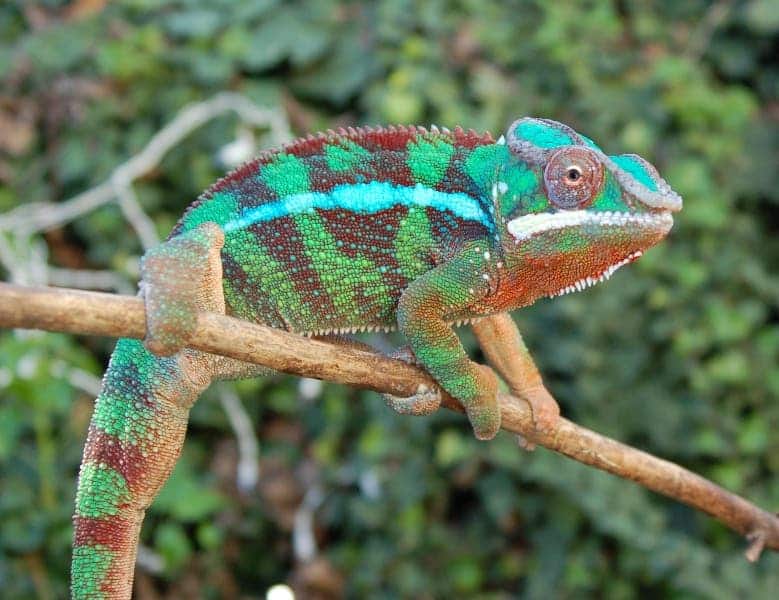The chameleon is one of the most remarkable, but also iconic creatures in the animal kingdom. It’s color shifting traits has made it the subject of metaphors. A person who is a master of disguise is rightfully labeled a chameleon. But how does the elusive lizard work its magic? After years of observation and rigorous study, scientists have finally uncovered how they do it. Beneath the outer layer of skin, chameleons have special nanocrystals that are evenly spaced. These reflect light and changing the spacing between the crystals also changes what kind of light gets reflected and eventually hits our eyes. Ultimately, this is how the chameleon turns green from red in a matter of a few minutes, or vice versa.
Panther chameleons are one of the most colorful chameleon species available today. Native to Madagascar, which is home to about half the world’s 150 or so species of chameleon, they are able to turn a wide variety of colors depending on their locale or the area from which their line originated. For instance, when it encounters a male competitor or mate, the panther chameleon shifts its background color from its typical green to yellow, the blue patterning turns white and the red with lines throughout it body becomes brighter.
For a long time, biologists thought chameleons achieve their color morphing through the dispersion of pigment containing organelles within their skin. The team at University of Geneva, led by Prof Michel Milinkovitch, found this to be false, however. Using spectroscopy on skin grafted from the lizards, the researchers discovered a layer of cells called iridophores, containing nanocrystals made of guanine, beneath the pigmented skin cells. These cells reflect among others the blue part of incident light. If the upper layer of chromatophores is yellow, the reflected light becomes green (blue plus yellow).
Careful analysis showed that the guanine nanocrystals are arranged in a lattice (evenly spaced), and the distance between the nanocrystals determines the color of the reflected light. When the chameleon was calm, the crystals were arranged in a dense network which mostly reflected blue light. When threatened or aroused, the pattern was looser by about 30%, allowing the reflection of yellows or reds, as reported in Nature Communications.
Deeper still under the chameleon’s skin, below the iridophores, lies a layer of dark melanin containing melanophores which influence the lightness of the reflected light. This is how the chameleon changes in hue from pale to dark green for instance.
Together, all of these layers work together to camouflage the chameleon and change color within minutes. Chameleons can’t change to any background though – that’s a myth!
“I’m sorry to say this isn’t true,” said Milinkovitch. “Typically they are extremely well camouflaged in their relaxed state, because they are green against a background of leaves, and they are as noticeable as possible when displaying.”










